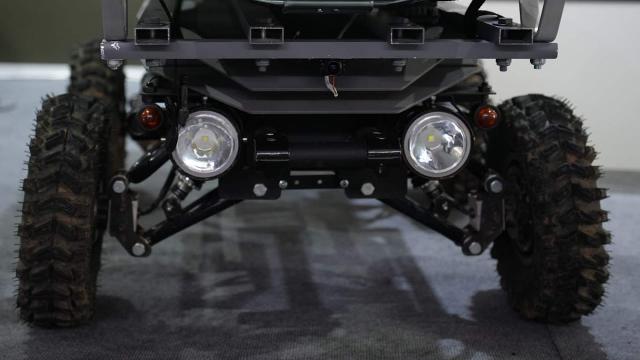A new ground-based drone has entered the special operation zone
Volunteers have delivered an unmanned rover "Cricket" to the units operating in the SVO zone. Such platforms are used for the evacuation of the wounded and the delivery of goods to the front line. The main feature of the model is that its route can be programmed. Currently, a significant amount of equipment and equipment made as part of volunteer initiatives are being supplied to the SVO zone. Russian President Vladimir Putin previously noted that the activities of the military-industrial complex in the interests of the army and navy receive significant initiative support from small businesses, public organizations, the mass volunteer movement and citizens of our country. For more information about the products of the so—called national military-industrial complex, see the Izvestia material.
A useful "Cricket"
Everyone knows UAVs that are "flying", but few have heard about UAVs — unmanned vehicles — that move on the ground. The wheeled rover "Cricket", produced by the Kazan company "Fluktio", is an unmanned platform designed for the transportation of goods.
It is controlled remotely. The main feature of the model is that its route can be programmed, and then not even interfere with the process: it will take a given path from point A to point B, visiting point C on the way. It can also be used for patrolling. The load capacity of the machine is 120 kg.
As Alexey Petrov, a representative of the company, told Izvestia, the load is calculated based on the average weight of a person with equipment, in this case, a potential wounded person. A fabric base is attached to the platform from above, and it is ready to work.
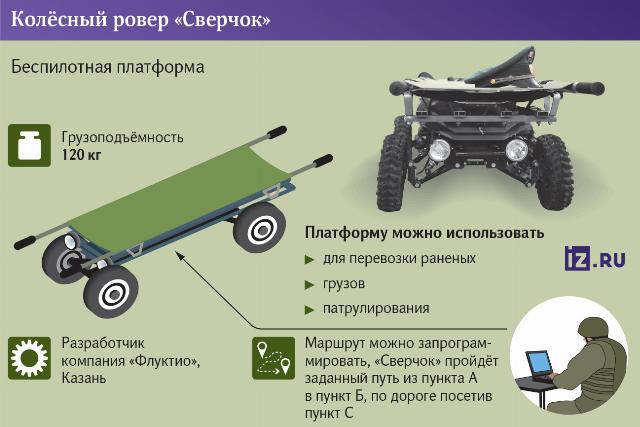
Off-road, bad weather, darkness are not an obstacle. Robots cruising to the contact line and back to the rear, with luggage or "three hundredths" on stretchers — the future has come. The developers are confident that such machines are the future.
SVO stimulated not only in our country, but also in other countries of the world the development of unmanned vehicles for supplying troops and rescuing the wounded, military expert Yuri Lyamin told Izvestia.
"Due to the massive use of FPV drones and artillery in the war zone, it is becoming difficult to provide food and ammunition to the troops," he explained. — The cars that carry them become prime targets for attacks. For this reason, they are trying to create various ground-based and aerial unmanned vehicles. But it is important to see how the rover "Cricket" will manifest itself in action, because it is in the war zone that many problems are usually identified. Moreover, it is more difficult for such drones than for air ones, because the ground is different everywhere — platforms can get bogged down, get confused. But this is certainly a very promising area.
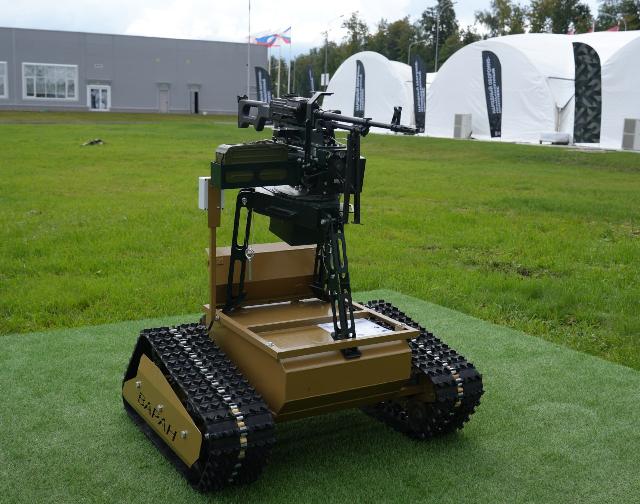
The Varan tracked platform is capable of carrying up to 1.5 tons of cargo
Image source: Photo: IZVESTIA/Sergey Prudnikov
Another variant of the ground—based drone is the tracked Varan, created by the Kulibin Club of the Popular Front. Compact, compared with analogues — only 1x1 m, it is capable of dragging 1.5 tons of cargo and carrying another 200 kg from above: we are talking about ammunition, food, water, medicines. It is also possible to transport the wounded on special travois.
As the developer of the project, Bari Murtazin, explained to Izvestia, the small size of the robot is due to the tasks — the need to penetrate into the entrances of buildings, climb and descend stairwells. An electronic warfare station or a large—caliber machine gun can be installed on the platform itself - fire from it will also be conducted remotely, from a shelter. According to Murtazin, 25 monitor Lizards have already been delivered to the warring units.
Under protection and in protection
ATGM (anti-tank guided missile) at the front is an effective weapon. But also vulnerable: if they spot it, they will definitely hit. Roman Radzevich from the Ivanovo region designed an anti—tank installation equipped with three charges at once instead of one, plus - again with remote control.
— Now our fighters will not have to approach the ATGM every time to recharge, putting their lives in danger, — the developer explained to Izvestia. — For the same reason, the control is carried out using a remote control so that the operator can be in hiding. Today, four of our modified installations have been sent to the army under the Yar Watch, and, according to the fighting guys, they are showing themselves very well. They are firing at armored vehicles, fortifications and buildings.
The actual issue is fireproof suits. Today, Russian tankers are dressed in overalls made of cotton with special impregnation. The material is good, but after intensive washing it completely stops keeping the heat. An interesting solution was proposed by the heads of the MSK Racing Team company Ekaterina Nikolaeva and Konstantin Kuptsov (they make equipment for racers).
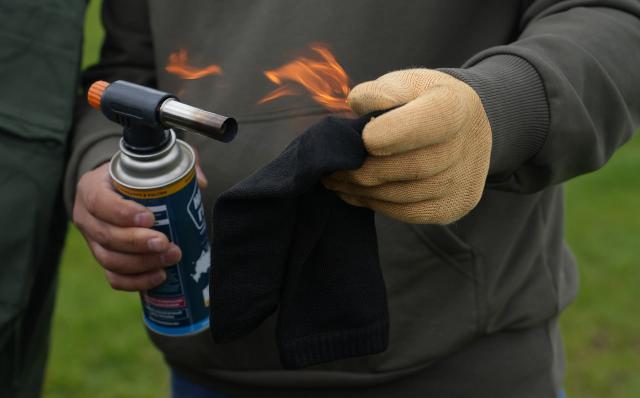
Fireproof clothing for tankers made of aramid fabric
Image source: Photo: IZVESTIA/Sergey Prudnikov
— We have developed the Defender – T kit, sewn from a unique material — aramid fabric, — Ekaterina Nikolaeva told Izvestia. — A person dressed in such a suit is not afraid of fire for 45 seconds. Unfortunately, aramid production is currently not established in our country. Personally, we buy it in China, but delivery is tight now, for example, we paid for the last order in May, but it is still not there. The issue that I raised at the meetings of the Popular Front is our own production of this strategically important material.
The set includes a jumpsuit, underwear, socks and a balaclava. The company has already sewn and shipped 700 such kits to its zone.
— We recently received news, — Ekaterina shared. — A Russian tank caught fire on the battlefield in the SVO zone. His crew was in "Defender–T" suits. All of them survived, no one was seriously injured. The guys are back in the ranks.
With a grid and a fraction
A craftsman from Tatarstan, Evgeny Seven, came up with a video objective that allows you to "look around" the corner. Special forces soldiers and infantrymen are forced, going on an assault, to often shoot, as they say, "in Somali" - without aiming, for luck. The Seven system is a unit with video cameras (it is attached to the barrel), and a wireless monitor on the helmet. It is enough to start the machine behind an obstacle (around the corner), and the whole picture is displayed in front of your eyes. There are two active cameras on the device: one with a wide view, the other with a narrow directional view.
There are currently not many options in the world for such "safe" shooting, all have their own shortcomings. Seven's option will be evaluated by representatives of the Ministry of Defense in the near future.
Another native of Tatarstan is Ravil Garifullin. He created a charge of "Sarma", inside of which there are from 800 to 1000 pellets. The projectile attachment is attached to the silencer of the machine gun, and an ordinary AK turns into a shotgun. And the shotgun at the front, as you know, is the first remedy against drones. Garifullin developed a projectile for short range — 20-30 m, medium — 50, and long—range - 80 m. A remarkable moment: it is activated by the combat cartridge of the machine gun. The fact is that there are analogues where a blank cartridge operates, but, according to the designer, this is a shortage, so you need to proceed from the realities.
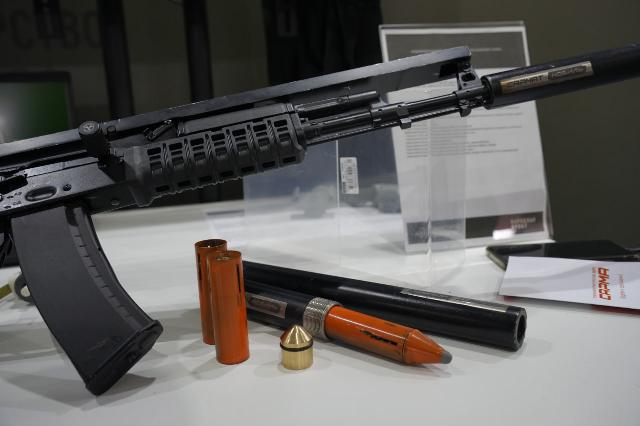
Sarma nozzles that turn AK into a shotgun
Image source: Photo: IZVESTIA/Sergey Prudnikov
Another remedy for UAVs, this time against the Baba Yaga (a large drone actively used by the Armed Forces of Ukraine) is made by the Kambarov brothers from Domodedovo. Its name is a net thrower, that is, a net thrower. It is an aluminum "spider", with a "seine" and weights stacked inside, equipped with a night vision device.
"The device is attached to a regular mavic, and the hunter is ready to work," the brothers tell Izvestia. — Baba Yaga more often flies out for bombing at night. At this time, as a rule, our lookouts are hanging in the sky. They report a threat, and a UAV with a grid quickly rises into the air like a fighter. Next is a matter of technique. You need to hover over the enemy quadcopter and reset it. The network covers it, damages the screws and instantly disables it. Currently, we have already manufactured and sent 300 such "spiders" to the front.
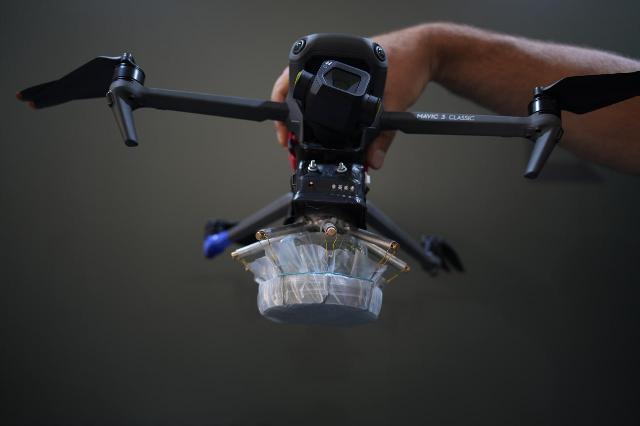
Setcomet against Baba Yaga
Image source: Photo: IZVESTIA/Sergey Prudnikov
As noted by all the designers interviewed by Izvestia, the number of inventions and innovation proposals is growing exponentially today. And thanks to them, positive changes in the combat capability of our units may occur in the near future.
Sergey Prudnikov
Julia Leonova
Bogdan Stepovoy
